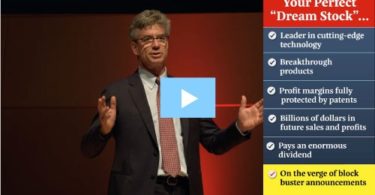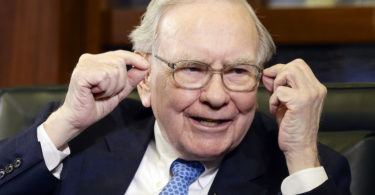Company Overview
Savara Inc. (NASDAQ: SVRA) is a clinical-stage biopharmaceutical company focused on rare respiratory diseases ([1]). Its lead (and essentially only) product candidate is MOLBREEVI (molgramostim inhalation solution), an inhaled form of GM-CSF being developed to treat autoimmune pulmonary alveolar proteinosis (aPAP) – a rare lung disease with no approved therapies in the U.S. or Europe ([1]) ([2]). Savara completed a successful Phase 3 trial (IMPALA-2) in 2024, demonstrating statistically significant improvements in lung function and symptoms for aPAP patients on Molbreevi ([3]). The company initiated a rolling Biologics License Application (BLA) submission to the FDA in late 2024 and requested priority review, aiming for a potential approval in 2025 ([1]) ([4]). However, a major setback occurred in May 2025 when the FDA issued a Refusal to File (RTF) letter, indicating Savara’s BLA was not sufficiently complete – specifically lacking certain Chemistry, Manufacturing, and Controls (CMC) data ([5]). This regulatory delay has become a focal point for investors and is the basis of a securities class-action lawsuit against Savara management. Notably, an important November 7, 2025 deadline looms for Savara shareholders: it is the last date to seek lead-plaintiff status in that class-action case ([6]). In this report, we examine Savara’s fundamentals – dividend policy, financial leverage, valuation, and key risks – in light of this critical juncture.
Dividend Policy and Shareholder Yield
Savara has never paid a dividend on its common stock, and management makes clear that this is unlikely to change. The company explicitly states that it “does not expect to pay any cash dividends in the foreseeable future,” opting to retain any future earnings to fund development and growth ([7]). As a result, SVRA’s dividend yield is 0%, and investors should assume that all potential return will come from stock price appreciation ([7]). Traditional income metrics like Funds From Operations (FFO) or Adjusted FFO aren’t applicable here – Savara is a pre-revenue biotech with no operating cash flows yet. In fact, the company has accumulated a deficit of nearly half a billion dollars ($489.3 million) through years of R&D without reaching profitability ([7]). For now, management’s capital allocation is entirely growth-oriented (drug development and regulatory/commercial preparation), not shareholder payouts. Any future shareholder returns will hinge on the clinical and commercial success of Molbreevi, rather than dividends or buybacks.
Financial Leverage and Debt Maturities
Despite its lack of revenue, Savara’s balance sheet is relatively strong after recent financings. As of mid-2025, the company held ~$146.4 million in cash and short-term investments against ~$29.7 million in debt ([8]) ([8]). The debt consists of a term loan facility with Hercules Capital that Savara entered in March 2025, replacing an earlier $26.5 million Silicon Valley Bank loan ([7]) ([7]). The new Hercules loan provided an initial $30 million tranche (used to fully repay the SVB loan) and offers additional tranches (up to $170 million more) contingent on future milestones – notably FDA approval of Molbreevi and achievement of revenue targets ([7]) ([7]). This facility significantly extends Savara’s debt maturity profile: the term loan matures in April 2030, with interest-only payments required until at least April 2028 (and even longer, through 2030, if Molbreevi is approved on schedule) ([7]).
Importantly, the loan covenants are designed to protect the lender and ensure Savara maintains a liquidity buffer. For example, if Savara’s cash balance falls below $40 million, the company must maintain at least six months of operating expense in cash and 1.2× the loan principal in cash (1.75× in the loan’s final year) ([7]). At present, Savara is well above these thresholds – its current ratio is over 11×, reflecting a large surplus of liquid assets relative to short-term liabilities ([9]). Interest expense on the debt (floating rate roughly prime + 1.45%) is easily covered by the cash on hand, since Savara has no earnings or cash inflows. In effect, interest coverage comes from the cash reserves, not operating income. The company’s quarterly net loss was ~$22 million in Q2 2024 and ~$20 million in Q2 2025 ([3]) ([3]), so it is burning cash for R&D and pre-commercial activities. Thanks to a $100 million equity raise in mid-2024 at $3.81/share ([10]) and prudent cash management, Savara believes it has sufficient capital to fund operations into 1Q 2027 without needing to tap equity markets again ([2]) ([2]). This suggests that, barring unexpected setbacks, the company can reach key milestones (BLA approval and early commercialization) on its existing cash – a crucial buffer that mitigates near-term dilution risk.
Valuation and Comparable Metrics
Valuing a pre-revenue biotech like Savara requires looking at its pipeline potential and cash, rather than traditional earnings multiples. Savara currently trades around $4 per share (as of late October 2025), which implies a market capitalization on the order of ~$650–700 million (roughly in line with the $648 million noted in August) ([9]). Backing out ~$146 million in cash, the market is assigning an enterprise value (~$500–550 million) to Savara’s drug assets. For context, Molbreevi’s target patient population is small but significant in orphan disease terms: about 3,600 diagnosed aPAP patients in the U.S. (and a similar order in Europe) who currently rely on whole-lung lavage procedures as their standard of care ([2]) ([2]). If Molbreevi becomes the first FDA-approved therapy for aPAP, it could capture a large share of these patients, especially given the high unmet need and positive clinical data. Orphan drugs often command high annual prices, so even a few thousand patients could translate into several hundred million dollars in potential peak revenue. By that measure, Savara’s EV is roughly 2× or less an optimistic peak sales estimate – suggesting the stock’s valuation anticipates success but is not exorbitant relative to the opportunity.

That said, traditional ratios like P/E or P/FFO are not meaningful here (Savara has no earnings or funds from operations yet). Instead, investors and analysts rely on pipeline risk-adjusted NPV models and comparables from similar biotech deals. Notably, Wall Street sentiment on SVRA remains bullish despite the BLA hiccup: in August 2025, JMP Securities reiterated a $8.00 price target (over 2× the then-trading price of ~$3.09) based on Molbreevi’s strong Phase 3 results published in NEJM ([9]). Analyst targets for SVRA range from ~$5 up to $16, reflecting a consensus view that approval is likely and the drug’s prospects are promising ([9]). One positive indicator: all patients who completed the 48-week Phase 3 trial opted into a long-term extension, underscoring both the drug’s tolerability and patient enthusiasm ([3]) ([9]). If the FDA approves Molbreevi on the expected timeline (possibly by mid-to-late 2026, assuming a resubmission in Dec 2025 and priority 6-month review ([8]) ([8])), Savara’s current valuation could prove modest – especially given the New England Journal of Medicine publication and an editorial suggesting inhaled Molbreevi could replace whole lung lavage as standard of care for aPAP ([9]).
Of course, this valuation hinges on a binary outcome (regulatory approval) and subsequent commercial execution. The stock has been highly volatile, reflecting this risk-reward profile. In 2023, SVRA surged over +200% after the Phase 3 success ([11]), then in 2025 it plunged from a high of ~$4.23 to a low near $1.94 when the FDA refused the BLA filing ([11]). It has since recovered back into the mid-$4s as investors gain confidence in a path forward (and possibly price in the lawsuit’s impact as minimal). Comparably, many development-stage biotech stocks trade at a steep discount if facing funding risk or uncertain data – in Savara’s case, the cash runway and clear efficacy data have supported a relatively robust valuation. In short, SVRA’s current price reflects optimistic expectations that Molbreevi will reach the market in 2026–2027 and achieve significant penetration in its niche, but any further delays or surprises could change that calculus quickly.
Key Risks and Red Flags
While Savara’s story is compelling, investors should be aware of several risks and red flags:
– Regulatory Setback & Delay: The FDA’s Refusal-to-File letter in May 2025 was a serious blow. It revealed that Savara’s BLA (submitted March 2025) was “not sufficiently complete to permit substantive review” due to missing CMC information ([5]). The good news is that no efficacy or safety issues were cited – the FDA did not request new clinical trials ([5]). However, the delay pushes the approval timeline out by roughly a year. Savara had to generate the required CMC data and plans to resubmit the BLA in December 2025 with a new drug substance manufacturer (Fujifilm) in place ([8]) ([8]). Until the application is accepted and approved, there’s uncertainty. Any further regulatory hurdles (e.g. additional FDA requests, inspection issues at the manufacturer, etc.) could significantly impact SVRA’s value. The setback also indicates potential gaps in management’s execution, as a well-prepared BLA might have avoided such a refusal.
– Securities Class-Action Allegations: In the wake of the RTF news, multiple law firms filed class-action suits alleging that Savara misled investors regarding Molbreevi’s BLA. The complaint (on behalf of those who bought SVRA between March 7, 2024 and May 23, 2025) claims that Savara failed to disclose critical problems in the BLA – specifically that Molbreevi’s BLA lacked sufficient CMC data, that the FDA was unlikely to approve it in that form, and that consequently Savara’s stated timeline was unachievable and the company would likely need to raise additional capital ([12]). When the truth emerged (with the FDA’s refusal), the stock dropped and investors incurred losses, hence the lawsuit. The lead plaintiff filing deadline is November 7, 2025 ([6]). While such lawsuits are common after biotech drops and may ultimately be covered by insurance or settled, the allegations raise a red flag about management’s transparency and governance. If discovery were to show that executives knew about severe CMC shortcomings but didn’t alert investors, it could damage management’s credibility. Even in the best case, dealing with litigation will consume resources and attention.
– Financing and Dilution Risk: Biotech companies live or die by their cash runway. Savara has publicly stated it is funded into 2027 ([2]), but that assumption likely presumed a 2025 approval and early-2026 product launch generating revenue. The FDA delay eats into this cushion – the company must now carry its operations (including building commercial infrastructure) for perhaps an extra year before any chance of product revenue. If approval slips further or launch uptake is slow, Savara might need to raise capital sooner than expected. The class-action suit’s allegation that a delay “increased the likelihood that the Company would need to raise additional capital” rings true if timelines extend ([12]). Any new equity offering could dilute current shareholders. On the debt side, Savara’s loan covenants require maintaining substantial cash; a breach (from cash depletion) could accelerate debt repayments ([7]), which is another incentive to raise funds if needed. In short, the longer it takes to get Molbreevi on the market, the higher the financing risk.
– Single-Product Dependence: Savara’s fate rests almost entirely on Molbreevi. The company does not have other clinical programs of similar significance in its pipeline at this time. This concentration risk means any negative development for Molbreevi – whether regulatory, clinical, or commercial – could leave Savara with no alternative value driver. For instance, if the FDA ultimately required an additional trial or did not approve Molbreevi, SVRA stock would likely be devastated. Even post-approval, Molbreevi’s commercial success is not guaranteed. It’s a rare disease product, so commercial execution (e.g. identifying and educating aPAP patients, securing insurance coverage for what could be an expensive therapy, etc.) will be crucial. Savara is already building out a small specialty sales force and patient support infrastructure in anticipation ([2]), but as a first-time commercial company there is execution risk. Moreover, though no direct competitor is approved, one could imagine future competition if Molbreevi validates the aPAP market – for example, other inhaled GM-CSF formulations or gene therapies could emerge over time. Relying on a single drug in a niche market is inherently high-risk/high-reward.
– Stock Volatility & Insider Sentiment: As noted, SVRA’s share price has swung widely with news flow. This volatility can be a red flag for risk-averse investors, as it suggests the stock could react violently to any new development (good or bad). So far in 2025, the stock has ranged from about $1.94 to $4.23 ([11]). Such swings can be driven by speculative trading, making SVRA vulnerable to momentum and sentiment changes. It’s also worth watching insider trading or ownership: large sales by insiders or major holders (if any occur) could signal concern. At the same time, any strategic interest – e.g. a partnership or buyout offer from a larger pharma – could dramatically move the stock upward. These are less “fundamental” risks but factor into owning a volatile small-cap biotech.
In summary, investors should weigh these risks: regulatory uncertainty, legal overhang, potential dilution, single-product reliance, and stock volatility. Thus far, Savara’s management has navigated clinical development well, but the BLA mishap and ensuing lawsuit highlight where things went awry. Going forward, execution and transparency need to be above reproach.
Open Questions and What to Watch
Before the November 7 deadline (and beyond), here are some open questions and issues to monitor regarding Savara:
– Will the FDA accept Savara’s revised BLA on the second try? The company aims to resubmit in Dec 2025 ([8]). Investors will want to know quickly (likely by Q1 2026) if the FDA files the application. Acceptance would restore some confidence, while another setback (e.g. a second RTF or major deficiency) would be very damaging.
– Can management rebuild credibility? The class-action allegations imply Savara’s leadership may have overstated their BLA readiness ([12]). How management communicates progress now – through candid updates on the resubmission, FDA feedback, etc. – will be critical. Any signs of continued over-optimism or lack of transparency could spook investors (and strengthen the lawsuit’s case).
– Is Savara truly financed through launch? The company claims it has cash to last into 2027 ([2]), but this assumes no major changes. Keep an eye on quarterly cash burn and whether Savara’s spending increases (for example, commercial launch prep costs). If the cash runway starts to look short (approaching that ~$40 million covenant threshold ([7])), Savara might preemptively raise capital. An ATM (at-the-market offering) or secondary stock offering is not out of the question in late 2026 if approval is pending but cash is dwindling.
– What is the potential market uptake for Molbreevi? Upon approval (if secured), how many of the ~3,600 U.S. aPAP patients will actually get on Molbreevi, and at what price? Will insurance reimburse a novel orphan drug that replaces a one-time hospital procedure (lung lavage)? Early launch indicators – patient enrollments, reimbursement wins, real-world outcomes – will determine if Molbreevi meets sales expectations. This ties directly into whether SVRA’s ~$700 million market cap is justified by future revenues.
– Are there other pipeline or strategic moves? Investors may also watch if Savara diversifies its pipeline via business development. With cash on hand, the company could in theory in-license or acquire complementary assets in rare respiratory or pulmonary diseases. So far, management’s focus is on Molbreevi and aPAP, but any pipeline expansion could change the story (positively by reducing single-asset risk, or negatively if it diverts resources). Likewise, does Savara become an acquisition target? A larger biotech or pharma interested in orphan lung diseases might find Molbreevi attractive, especially once it’s de-risked by approval. No such offers are public as of now, but it remains a possibility longer term.
In conclusion, SVRA presents a high-risk, high-reward scenario. The upcoming Nov 7 deadline is mainly about legal housekeeping – ensuring investors who lost money in the stock downturn can seek recourse ([6]) – but it also serves as a reminder of what’s at stake. By that date, investors should assess whether Savara’s current price appropriately balances the promising fundamentals (a potential first-in-class therapy with strong data, ample cash, and supportive analysts) against the known risks (regulatory delays, legal turmoil, and execution challenges). Savara’s ability to hit its revised milestones in the next few quarters will likely determine if “don’t miss your chance” turns out to be prescient advice for investors – or a cautionary tale. As always, those considering an investment should stay tuned to official filings, FDA updates, and company communications to inform their decisions. ([12]) ([9])
Sources
- https://investors.savarapharma.com/news/news-details/2024/Savara-Initiates-Rolling-Submission-of-a-Biologics-License-Application-BLA-to-the-U-S–Food-and-Drug-Administration-FDA-for-MOLBREEVI-for-the-Potential-Treatment-of-Autoimmune-Pulmonary-Alveolar-Proteinosis-aPAP-12-18-2024/default.aspx
- https://investors.savarapharma.com/news/news-details/2024/Savara-Reports-Third-Quarter-2024-Financial-Results-and-Provides-Business-Update-11-12-2024/default.aspx
- https://investors.savarapharma.com/news/news-details/2024/Savara-Reports-Second-Quarter-2024-Financial-Results-and-Provides-Business-Update-08-12-2024/default.aspx
- https://biospace.com/press-releases/savara-completes-submission-of-the-biologics-license-application-bla-to-the-u-s-food-and-drug-administration-fda-for-molbreevi-as-a-treatment-for-autoimmune-pulmonary-alveolar-proteinosis-apap
- https://investors.savarapharma.com/news/news-details/2025/Savara-Receives-Refusal-to-File-RTF-Letter-From-the-U-S–Food-and-Drug-Administration-FDA-for-the-Biologics-License-Application-BLA-for-MOLBREEVI-to-Treat-Patients-With-Autoimmune-Pulmonary-Alveolar-Proteinosis-autoimmune-PAP/default.aspx
- https://globenewswire.com/news-release/2025/10/24/3173131/673/en/SVRA-IMPORTANT-DEADLINE-ROSEN-TOP-RANKED-GLOBAL-COUNSEL-Encourages-Savara-Inc-Investors-to-Secure-Counsel-Before-Important-November-7-Deadline-in-Securities-Class-Action-SVRA.html
- https://sec.gov/Archives/edgar/data/1160308/000095017025045731/svra-20241231.htm
- https://biospace.com/press-releases/savara-reports-second-quarter-2025-financial-results-and-provides-a-business-update
- https://investing.com/news/analyst-ratings/savara-stock-rating-reiterated-by-jmp-on-strong-phase-3-data-93CH-4203775
- https://biospace.com/savara-announces-pricing-of-100-0-million-underwritten-offering-of-common-stock
- https://macrotrends.net/stocks/charts/SVRA/savara/stock-price-history
- https://globenewswire.com/news-release/2025/10/17/3168905/32719/en/SVRA-Lead-Plaintiff-Deadline-11-7-25-Reminder-Savara-Inc-Investors-Should-Contact-Robbins-LLP-for-Information-About-the-Class-Action-Lawsuit.html
For informational purposes only; not investment advice.




